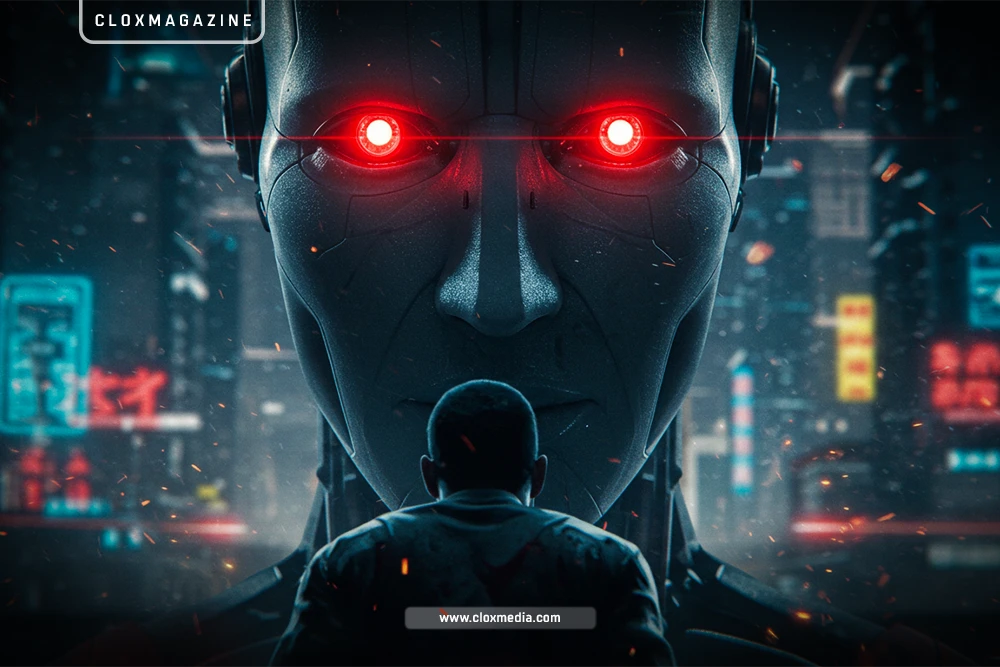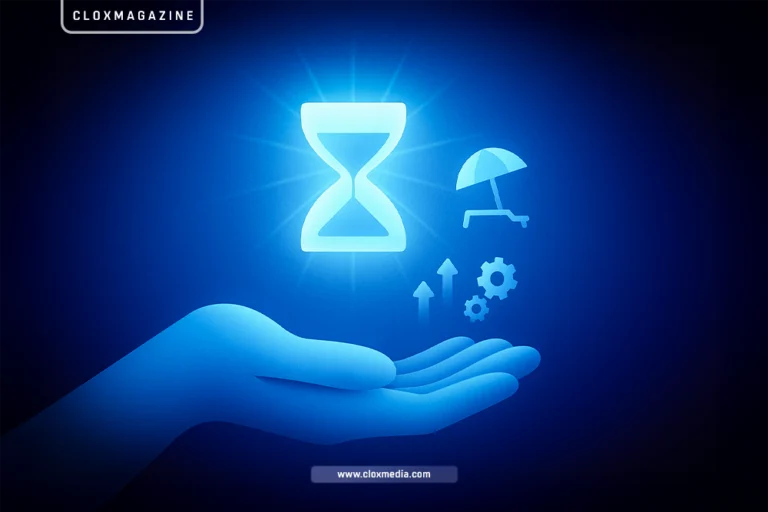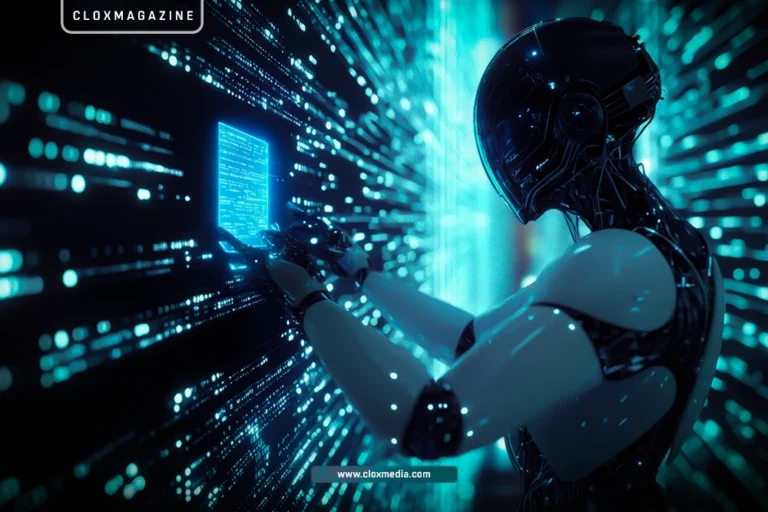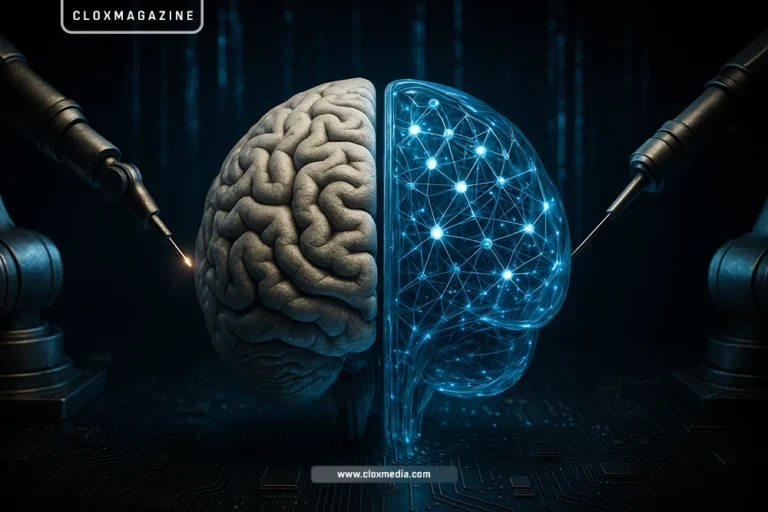Picture this: you’re scrolling through your phone at breakfast, and another headline screams about AI taking over the world of work. Your coffee suddenly tastes a bit more bitter as you wonder if your job will exist in five years. Sound familiar?
You’re not alone in this anxiety.
But here’s what might surprise you; the reality of AI’s impact on jobs is far more nuanced than the doom-and-gloom headlines suggest. Recent research reveals a fascinating paradox: while AI will indeed reshape the job landscape dramatically, the story isn’t simply about mass unemployment. Instead, we’re looking at the most complex workforce transformation in human history, where some jobs disappear, others evolve, and entirely new categories emerge. The key isn’t whether AI will change your job – it will – but understanding how to navigate this transformation successfully.
NOTE: This is an official Research Paper by “CLOXLABS“
The Numbers Game: What the Data Really Shows
Let’s start with the elephant in the room: yes, AI will displace jobs. The U.S. Bureau of Labor Statistics doesn’t mince words… they project that by 2029, America will lose approximately one million jobs in office and administrative support occupations due to AI and automation1. That’s a sobering statistic that can’t be sugar-coated.
But here’s where it gets interesting. The Organization for Economic Cooperation and Development (OECD) found that 27% of jobs across member countries are in occupations at high risk of automation. However, this same research uncovered something unexpected: in sectors where AI is being implemented, 63% of workers in finance and 57% in manufacturing worry about job losses, yet many also report that AI is making their work less tedious and more satisfying.

The McKinsey Global Institute adds another layer to this complex picture. Their research suggests that by 2030, both Europe and the United States could see significant numbers of workers needing to transition to new occupations – up to 12 million in Europe alone, which represents double the pre-pandemic rate. The United States, meanwhile, is projected to maintain its pre-pandemic pace with nearly 12 million transitions.
These numbers paint a picture that’s neither purely optimistic nor catastrophically pessimistic. Instead, they suggest we’re entering an era of unprecedented job mobility and transformation. The question isn’t whether change is coming – it’s already here. The question is how we adapt to it.
… All ADS on this platform are served by GOOGLE …
The Great Divide: Which Jobs Are Actually at Risk
Not all jobs are created equal in the eyes of AI, and understanding this distinction is crucial for anyone planning their career future. Recent research analyzing 12 million online job vacancies reveals a fascinating pattern: about one-third of U.S. employment is highly exposed to AI, but here’s the twist – it’s primarily high-skill jobs, or what we traditionally call “white collar” positions, that face the greatest exposure.
This finding challenges the conventional wisdom that AI primarily threatens low-skilled workers. In reality, the jobs most susceptible to AI automation are often those involving routine cognitive tasks – data analysis, basic legal research, financial reporting, and even some aspects of medical diagnosis. Meanwhile, jobs requiring complex physical manipulation, creative problem-solving, or deep emotional intelligence remain largely protected.
The research shows an intriguing paradox: occupations with high computer use actually demonstrate a positive relationship between AI exposure and employment growth. This suggests that workers who are already comfortable with digital technologies are more likely to benefit from AI integration rather than be displaced by it.
Office and administrative support roles face particular vulnerability, with automation and AI technologies directly threatening many traditional clerical functions. However, this doesn’t mean all administrative jobs will vanish overnight. Instead, these roles are evolving to require more complex problem-solving, customer interaction, and technology management skills.
Expert predictions provide a timeline for when AI might exceed human performance in various tasks: translating languages by 2024, writing high-school essays by 2026, driving trucks by 2027, and working in retail by 2031. More complex tasks like writing bestselling books aren’t expected to be automated until 2049, while surgical work might not see AI dominance until 2053.
The Plot Twist: When AI Creates More Jobs
Here’s where the narrative gets genuinely surprising. While headlines focus on job displacement, emerging research reveals that AI can actually drive employment growth in many sectors. A comprehensive analysis of job markets found that in occupations where computer use is prevalent, greater exposure to AI correlates with higher employment growth.
How is this possible? The answer lies in understanding AI as a productivity amplifier rather than a simple replacement tool. When AI handles routine tasks, it frees human workers to focus on higher-value activities that require creativity, critical thinking, and interpersonal skills. This shift often leads to increased demand for human workers who can leverage AI tools effectively.
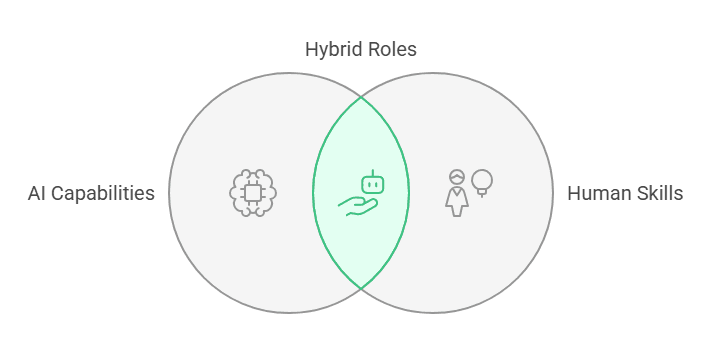
A recent study examining whether AI acts as a substitute or complement to human labor found compelling evidence for the complementary effect. By analyzing millions of job postings from 2018 to 2023, researchers discovered that roles explicitly requiring AI skills often demanded enhanced human capabilities alongside technical proficiency. This suggests that rather than replacing humans entirely, AI is creating hybrid roles that combine artificial and human intelligence.
The manufacturing and finance sectors provide real-world examples of this phenomenon. Despite initial fears, AI implementation in these industries has led to job creation in areas like AI system maintenance, data interpretation, and strategic decision-making. Workers report that AI handles dangerous and tedious tasks, allowing them to focus on more engaging and creative aspects of their work.
However, this positive outcome isn’t automatic. It requires deliberate effort from both employers and workers to identify opportunities for human-AI collaboration. Companies that view AI as a tool to augment human capabilities, rather than replace them, tend to see better outcomes for both productivity and employment.
… All ADS on this platform are served by GOOGLE …
The Human Advantage: Skills That Stay Irreplaceable
Despite AI’s impressive capabilities, humans possess certain advantages that remain difficult to replicate artificially. Understanding these enduring human strengths provides a roadmap for career resilience in an AI-dominated future.
Emotional intelligence stands out as perhaps the most significant human advantage. While AI can process data and recognize patterns, it struggles with the nuanced understanding of human emotions, motivations, and social dynamics that drive effective leadership, counseling, and team collaboration. Jobs requiring deep empathy, complex interpersonal relationships, and emotional support remain fundamentally human domains.
Creative problem-solving represents another area where humans maintain superiority. Although AI can generate content and solve defined problems, human creativity involves making unexpected connections, challenging assumptions, and innovating in ways that draw from diverse life experiences. This explains why roles in design, strategic planning, and artistic creation continue to see growth even as AI capabilities expand.
Physical dexterity in unpredictable environments also favors human workers. While robots excel in controlled manufacturing settings, jobs requiring fine motor skills in variable conditions – such as plumbing, electrical work, or skilled craftsmanship – remain challenging for AI systems. The cost and complexity of developing robots for these tasks often make human workers more economical.
Research indicates that workers who can effectively complement AI technologies by focusing on uniquely human skills are most likely to thrive in the evolving job market. This includes developing skills in AI collaboration, data interpretation, ethical decision-making, and complex communication – areas where human judgment and AI analysis can work synergistically.
The Timeline: When Will This Actually Happen
Understanding the timeline of AI transformation helps separate immediate concerns from longer-term planning needs. Expert surveys suggest we’re in the early stages of a gradual but accelerating transformation rather than facing an immediate job apocalypse.
Current AI adoption by firms remains relatively low, but rapid progress with generative AI tools, falling costs, and increasing availability of workers with AI skills mark what researchers call a “technological watershed” for labor markets. This suggests we’re at an inflection point where adoption rates could accelerate significantly over the next few years.
The research shows different timelines for different types of work. Routine cognitive tasks face the most immediate pressure, with some expert predictions suggesting significant automation within the next 5-10 years. However, jobs requiring complex human interaction, creative problem-solving, or physical dexterity in unstructured environments may remain largely human-dominated for decades.
Economic modeling suggests that the full impact of AI on employment patterns will unfold over 15-20 years rather than happening suddenly. This timeline provides opportunities for workforce adaptation, but it also means that complacency could prove costly. Workers and organizations that begin adapting now will be better positioned than those who wait for the transformation to become unavoidable.
Interestingly, economic analysis reveals that AI’s impact on wealth distribution could vary significantly based on how societies choose to implement and regulate these technologies. This suggests that policy decisions made in the coming years will significantly influence whether AI’s job market effects prove beneficial or harmful for different segments of the workforce.
Your Action Plan for the AI Era
Rather than ending with vague reassurances or apocalyptic warnings, let’s focus on concrete steps you can take to thrive in an AI-transformed job market. The research points to several strategies that consistently help workers adapt successfully to technological change.
First, embrace continuous learning with a focus on AI-adjacent skills. This doesn’t mean everyone needs to become a programmer, but understanding how AI tools work and how to collaborate with them effectively will become increasingly valuable. Many successful adaptations involve workers who learn to use AI as a powerful assistant rather than viewing it as a threat.
Second, develop uniquely human skills that complement rather than compete with AI. Focus on building expertise in areas like emotional intelligence, creative problem-solving, complex communication, and ethical reasoning. These skills become more valuable, not less, as AI handles routine tasks.
Third, stay informed about AI developments in your specific industry. Different sectors are experiencing AI transformation at different rates and in different ways. Understanding the specific trajectory for your field allows for more targeted adaptation strategies.
Fourth, consider the growing importance of hybrid roles that combine human judgment with AI capabilities. Many of the most promising job opportunities emerging from AI transformation require workers who can bridge the gap between human insight and artificial intelligence.
The evidence suggests that while AI will indeed transform the job landscape dramatically, the outcome isn’t predetermined. Workers who approach this change proactively, focusing on developing complementary skills and understanding AI’s capabilities and limitations, are most likely to benefit from the transformation. The key isn’t to compete with AI, but to discover how to work alongside it in ways that leverage the unique strengths of human intelligence.
The future of work isn’t about humans versus machines – it’s about humans with machines versus humans without machines. The choice of which category you fall into remains largely in your hands.
CLOXMAGAZINE, founded by CLOXMEDIA in the UK in 2022, is dedicated to empowering tech developers through comprehensive coverage of technology and AI. It delivers authoritative news, industry analysis, and practical insights on emerging tools, trends, and breakthroughs, keeping its readers at the forefront of innovation.

